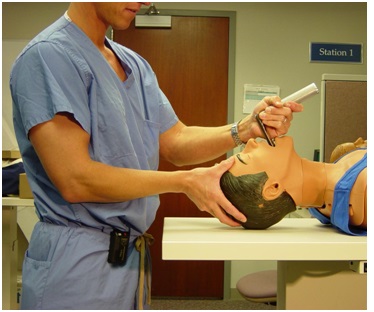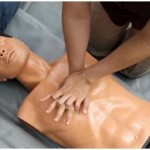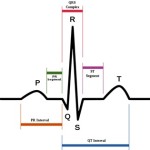Endotracheal intubation procedure is a placement of a tube into the trachea in order to maintain an open airway in patients who are unconscious or simply unable to breathe on their own. Oxygen, anesthetics and other gaseous medications that the patient need can be delivered though this tube.
The most common use of endotracheal intubation is for the following conditions:
- Respiratory arrest
- Respiratory failure
- Airway obstruction
- Need for prolonged ventilator support
- Class III or IV hemorrhage with very slow perfusion
- Pulmonary contusion or severe fail chest
- Multiple trauma, head injury and abnormal mental status
- Inhalation injury followed by erythema/edema of the vocal cords
Before every procedure there are some items evaluations, our technicians should memorize and follow them:
- Our patients understand the indication for the procedure
- Preparation and pretreatment
- Successful airway management
- Understands and manages complications
- Proper medical documentation of the procedure
What Is Endotracheal Intubation? The Video
Videos on
this site are for entertainment purposes only. Please
do not attempt any of the procedures seen in these videos
without formal medical education & licensing.
 How the endotracheal intubation procedure is performed?
How the endotracheal intubation procedure is performed?
In order to begin the endotracheal intubation, the anesthesiologist must open the patient’s mouth by separating the lips and pull the upper jaw with the index finger. The anesthesiologist is holding a laryngoscope in his left hand while he is inserting the tube into the patient with the blade directed to the right tonsil. Once he reaches the right tonsil, the laryngoscope is wept to the midline, holding the tongue on the left side to bring the epiglottis into view. The laryngoscope blade is advanced until the blade reaches the angle between the bases of the tongue on the left to bring the epiglottis into view. This laryngoscope blade has to reach the angle between the base of the tongue and the epiglottis. The next step is when the laryngoscope is lifted upwards towards the chest and away from the nose to bring the vocal cords into view. In most cases an assistant has to press on the trachea to provide a direct view of the larynx. The anesthesiologist takes the endotracheal tube (this tube is made of flexible plastic) holds it in the right hand, and starts inserting it through the mouth opening. The tube has to be inserted through the cords to the point that the cuff rests just below the cords. The final steps are over and the cuff is inflated to provide a minimal leak when the bag is squeezed. The anesthesiologist has to check the breathing sounds by using his stethoscope just to ensure the correct placement of the tube. After the anesthesiologist is sure that the breading sounds are good and we have a correct placement of the tube, we consider that this procedure is done by all the right steps and by all the rules written for endotracheal intubation procedure.
What Is The Preparation for Endotracheal Intubation procedure?
Before the endotracheal procedure starts, first the patient has to be placed on the operating table lying on the back with a pillow under his head. The anesthesiologist has to wear gloves, gown and goggles. The patient has to be under general anesthesia before the intubation starts.
Some risks for which our patients need to know?
The anesthesiologist should evaluate and follow the patient for potential complications that may include edema; bleeding; tracheal and esophageal perforation; pneumothorax; and aspiration. The patients should be advised of the potential signs and symptoms associated with life-threating complications of airway problems. The risks from this procedure and the symptoms that the patient may have are: sore throat, pain or swelling of the face and neck, pain in the chest, subcutaneous emphysema and some difficulty with swallowing.
Alternatives to endotracheal procedure:
The endotracheal tube that is inserted during this procedure has to maintain an open passage through the upper airway has a free passage and maintains good ventilation to the lungs. An alternative to endotracheal intubation is the esophageal tracheal combitube (ETC). The ETC is a double-lumen tube, it combines the function of the esophageal obturator airway and a conventional endotracheal airway. The esophageal lumen has a wide open upper end, perforations at the pharyngeal level, with a closed distal end. The ends of the tracheal lumen are open. The lumens are separated with a thin wall and each is related through a short tube with a connector. The operators use an oropharyngeal balloon in order to seal the oral and nasal cavities after the insertion. At the lower end you can see a second cuff that serves to seal either the trachea or esophagus.






















